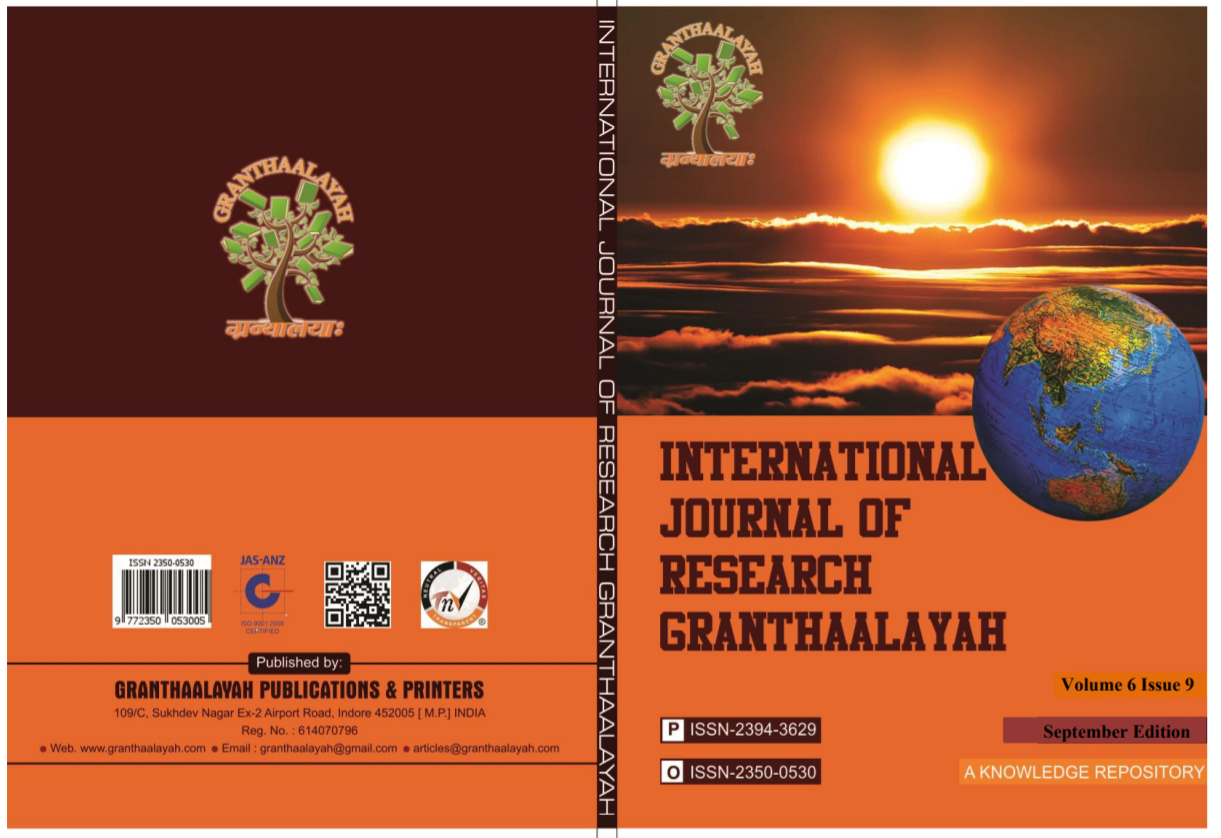OPTIMIZATION OF RESOURCES WITH THE AID OF LINEAR PROGRAMMING MODEL IN STEVE SHOE PRODUCTION CENTRE, ENUGU, NIGERIA
DOI:
https://doi.org/10.29121/granthaalayah.v6.i9.2018.1215Keywords:
Linear Programming Model, Resource OptimizationAbstract [English]
This paper studied the optimization of resources with the aid of linear' programming model in Steve Shoe Production Centre (SSPC), Enugu. The Linear programming model is a complex mathematical tool used for solving managerial decision problems. From the researcher's observation, Steve Shoe Production Centre depended completely on trial and error method of decision making which often yielded suboptimal results. This gap brought about the need to amongst others demonstrate how the linear programming model developed in this study can assist SSPC Enugu to optimize its resources for effective output decisions. Review of related literature was performed. The findings show that the linear programming model developed by the researcher is workable for optimal results in Steve Shoe Production Centre, Enugu.
Downloads
References
Adeyemo, J, & F. Otiero, (2009). Optimizing planting areas using differential evolution and linear programming. International Journal of Physical Sciences, (4): 212-220.
Agbadudu.B. A, (1996). Elementary Operations Research, Benin: A.B press.
Agbadudu, A. B. (2006). Operations Research, Mathematics and Social Sciences: The Link, Inaugural Lecture Series 86 of the University of Benin, Uniben Press.
Akingbade, F., Luck, M. & Ratal, N. (1991). Concepts and Applications of Operational Research in Development Management, Lagos: Centre for Management Development.
Akiniyi, J. A., (2008). Allocating available resources with the aid of linear programming: a roadmap to economic recovery, Multidisciplinary Journal of Research development, 10(2), 113-139.
Anderson, D. R, Sweeney, D. J. & Williams, T. A. (1997). An Introduction to Management Sciences, New York: West Publishing Company.
Andre B. et al, (2003). Linear Programming: A Mathematical Tool for Analyzing and Optimizing Children's Diets during the Complementary Feeding Period, Journal of Pediatric Gastroenterology and Nutrition, (36) 12-22. DOI: https://doi.org/10.1097/00005176-200301000-00006
Azar, A. (1999). Operations Research I. Payam-e Noor Publications.
Benedict, E. & Uzochukwu, A. (2012). Optimizing profit with the Linear Programming Model; Interdisciplinary Journal of Research in business. 2(2), 37 - 49.
Buckey W. (1967). Sociology and Modern Systems, Eaglewood - Cliffs, New Jersey: Prentice Hall Inc.
Charles, Cooper & Henderson, (1963), An Introduction to Linear Programming, New York; John Willy,
Cui A. et al, (2006). Linear Programming Detection and Decoding for MIMO System, IEEE Commun. Lett, (9) 5, 423-425.
Dantizig, G., (1993). Computational Algorithm of the Revised Simplex Methods, RAND Memorandum RM-1266.
Dhanalashm R. et al, (2009). Tamil POS tagging using linear programming. International Journal of Recent Trends in Engineering, 3(2), 166-169.
Dwivedi, D., (2008), Managerial Economics, VIKAS Publishing House PVT Limited, New Delhi Outline Series, New York; McGraw-Hall Inc.
Guilani-Nia, Sh. (2005). Advanced Research in Operations (Applied Concepts).
Hareem B & A. Aderoba, (2008). Linear Programming based Effective Maintenance and Manpower Planning Strategy, International Journal of the Computer, the Internet, and Management, 1(6) 26-34.
Henderson, J, & Quandt, R. (2003). Microeconomic Theory: A Mathematical Approach, New Delhi; McGaw-Hill Book Co., Tata.
Hillier, F, & Lieberman, G. (2001). Introduction to Operations Research, New York; McGaw-Hill Book Co.
Izaz U. K. et al (2011). Optimal Production Planning for ICI Pakistan using Linear Programming and Sensitivity analysis. International Journal of business and social science (2) 23 special issues - December 2011.
Koji, T & R. Gunner, (2002). Image reconstruction by Linear Programming. Max Planck Germany; Institute for Biological Cybernetics, Spemannstr, 38, 72076,
Koutsoyinnis, A. (1987). Modern Microeconomics. English Language Book Society, Macmillan Press Ltd.
Kurtz, D et al, (1992). Principles of Management USA; McGraw-Hill Inc. Lucey, T. (2002). Quantitative Techniques. London: Thompson Learning.
Mehdipoor, E. & Sadr-ol-ashraafi, S. M. & Karbaasi, A. (2006) A Comparison of Canonical Linear Programming Techniques, Meaty Chicken' Feed Framing With Linear Programming Models, Scientific-Research Magazine of Agriculture, 12th year, issue no. 3
Mudiaga Aiden- J. W. (2009). Problems and Prospects of establishing small-scale enterprises in Nigeria] A Project Research Deportment of-business administration Caritas University Enugu.
Murugan, N & S. Manivel, (2009), Profit Planning of an NGO run Enterprises using Linear Programming Approach, International Research Journal of Finance and Economics, (23), 443-454
Nedim F. et al, (2002). A sample of Determination of Product combination with Linear Programming in Risk Environment, European Journal of Economics, Finance and Administrative Sciences, 5(3), 30-45.
Orlin, J. B (2007). Optimization Methods in Management translated by Mohammad-
Reza Hamidizadeh Rapaport A. (1985) General Systems Theory: Essential concepts and applications, Tunbridge Wells: Abacus Publishers UK.
Rrnory, W, & P. Niland, (1998). Making Management Decisions, New Delhi Gupta Oxford & IBH,
Susilawati B. et al, (2002). Application of Linear Programming for Dormitory
Development Plan at Petra Christian University. http.//puslit.petra.ac.id/ journals/civil, Indonesia
Teha, H. (2008). Operations Research: An Introduction, New Delhi 110001 PHI Learning Private Limited.
Turban, I & Meredith, T. (1991). Principles of Management Science, Prentice Hall, and India Private Ltd.
Turban, 1, (1993). Decision Support and Expert Systems: Management Support Systems. New York; Macmillan Publishing Company.
Wagner, H.; (2007), Principles of Operations Research with Application to Managerial Decision, New Delhi; Prince-Hall of India Private Limited.
Yahya F. A. (2004). "The use of linear programming the design of antenna pattern with prescribed nulls and other constraints", compel: The International Journal for Computation and Mathematics in Electrical and Electronic Engineering, 3(4), 201 - 215
Downloads
Published
How to Cite
Issue
Section
License
With the licence CC-BY, authors retain the copyright, allowing anyone to download, reuse, re-print, modify, distribute, and/or copy their contribution. The work must be properly attributed to its author.
It is not necessary to ask for further permission from the author or journal board.
This journal provides immediate open access to its content on the principle that making research freely available to the public supports a greater global exchange of knowledge.

























